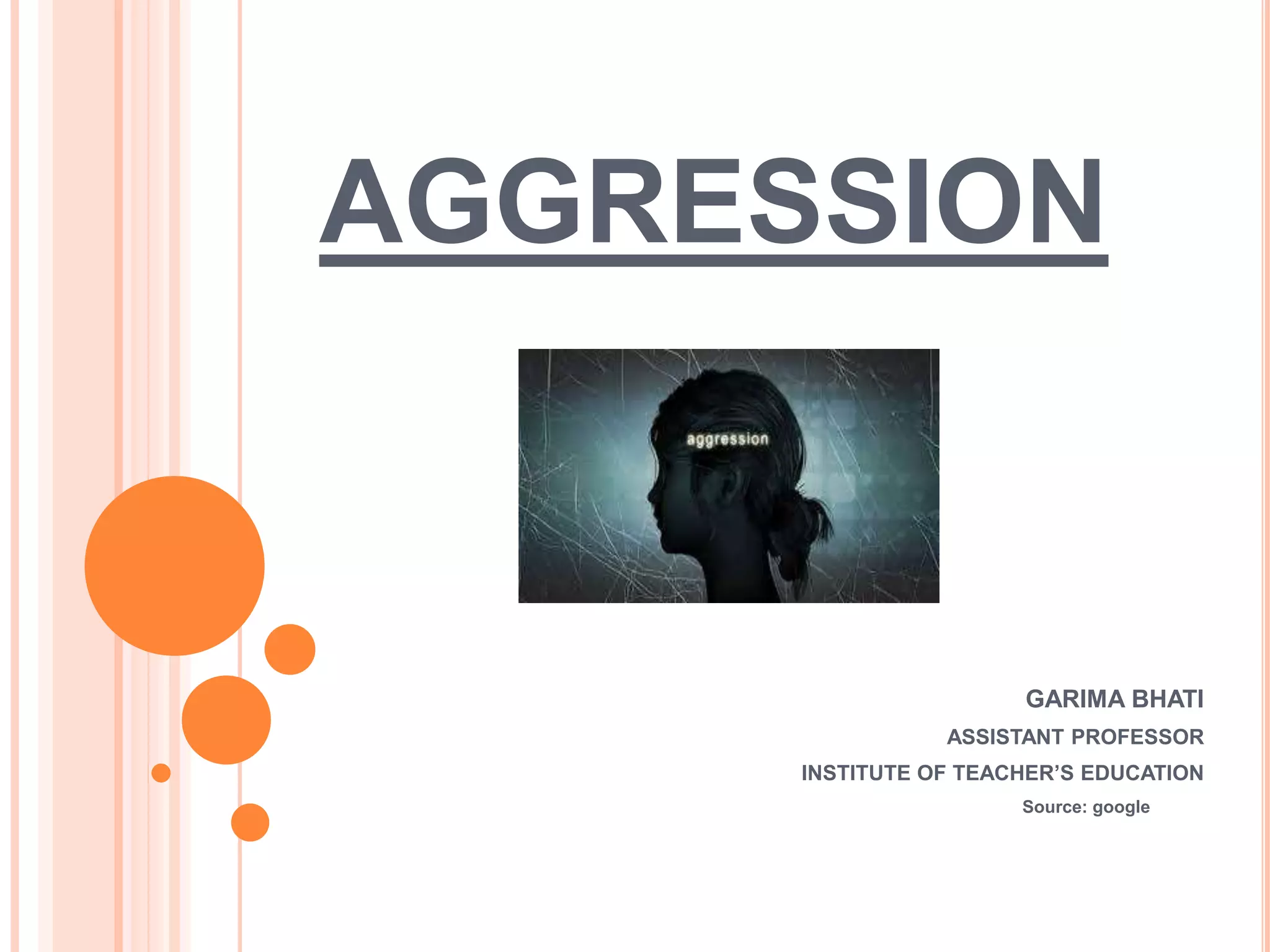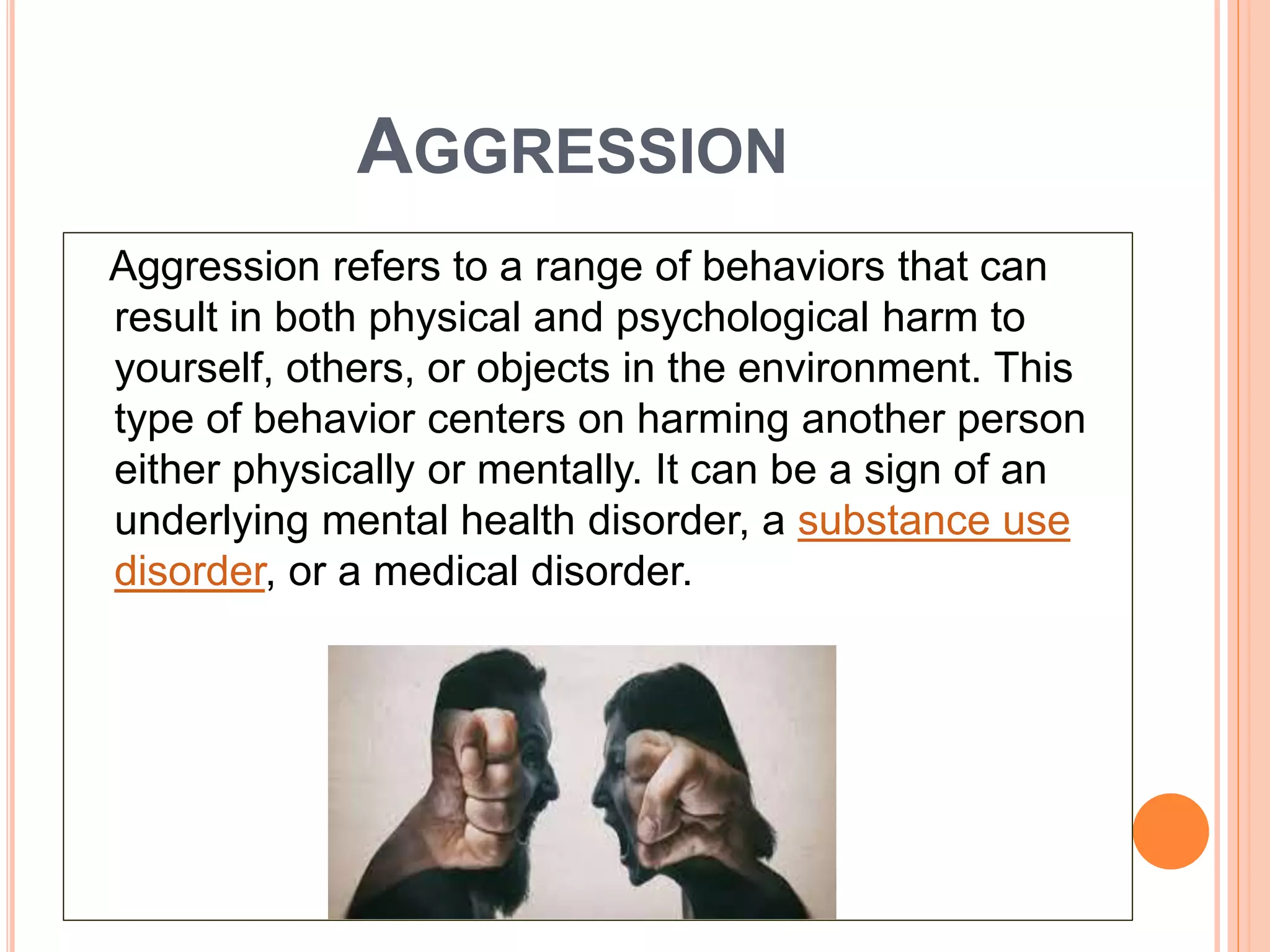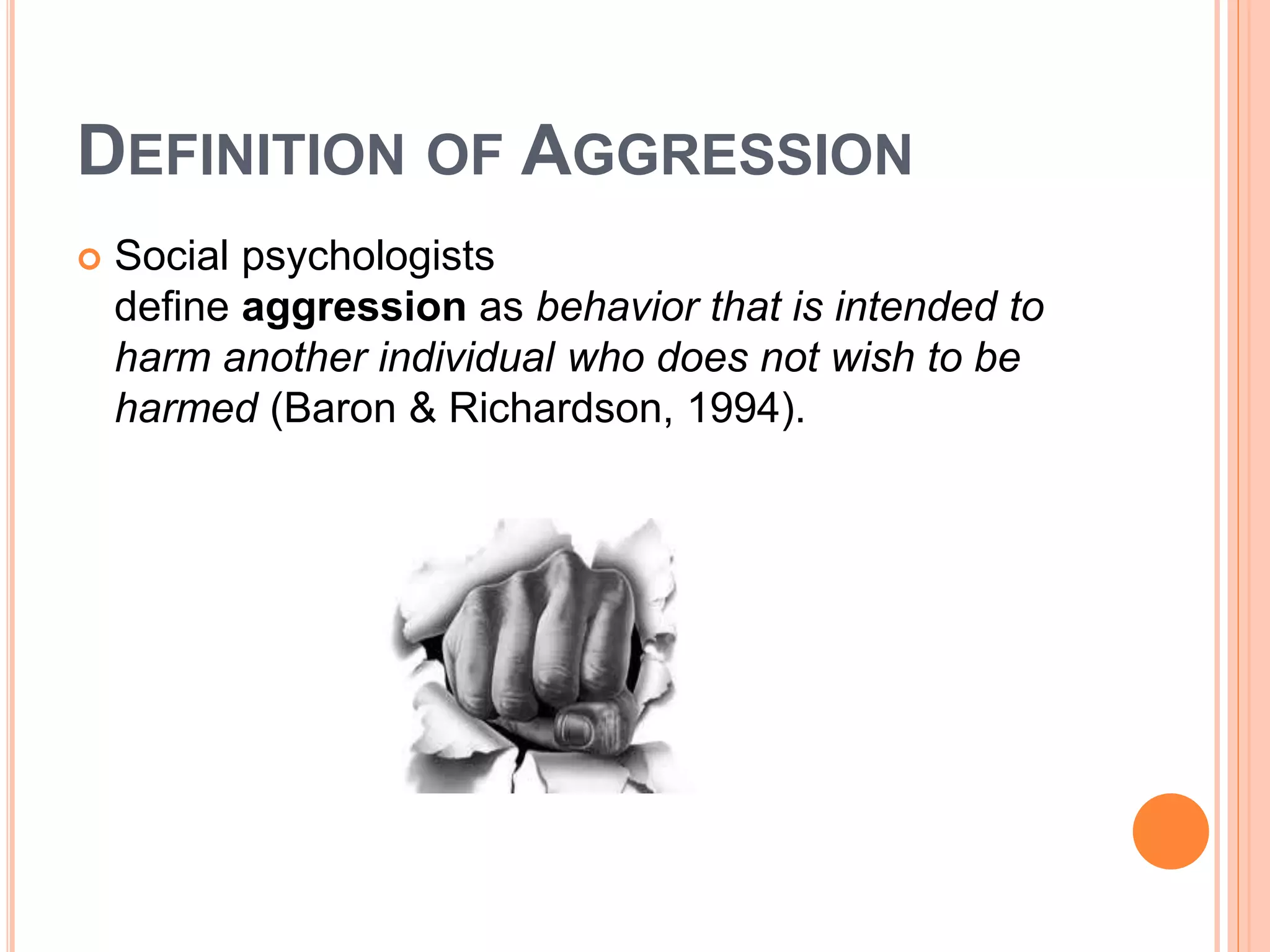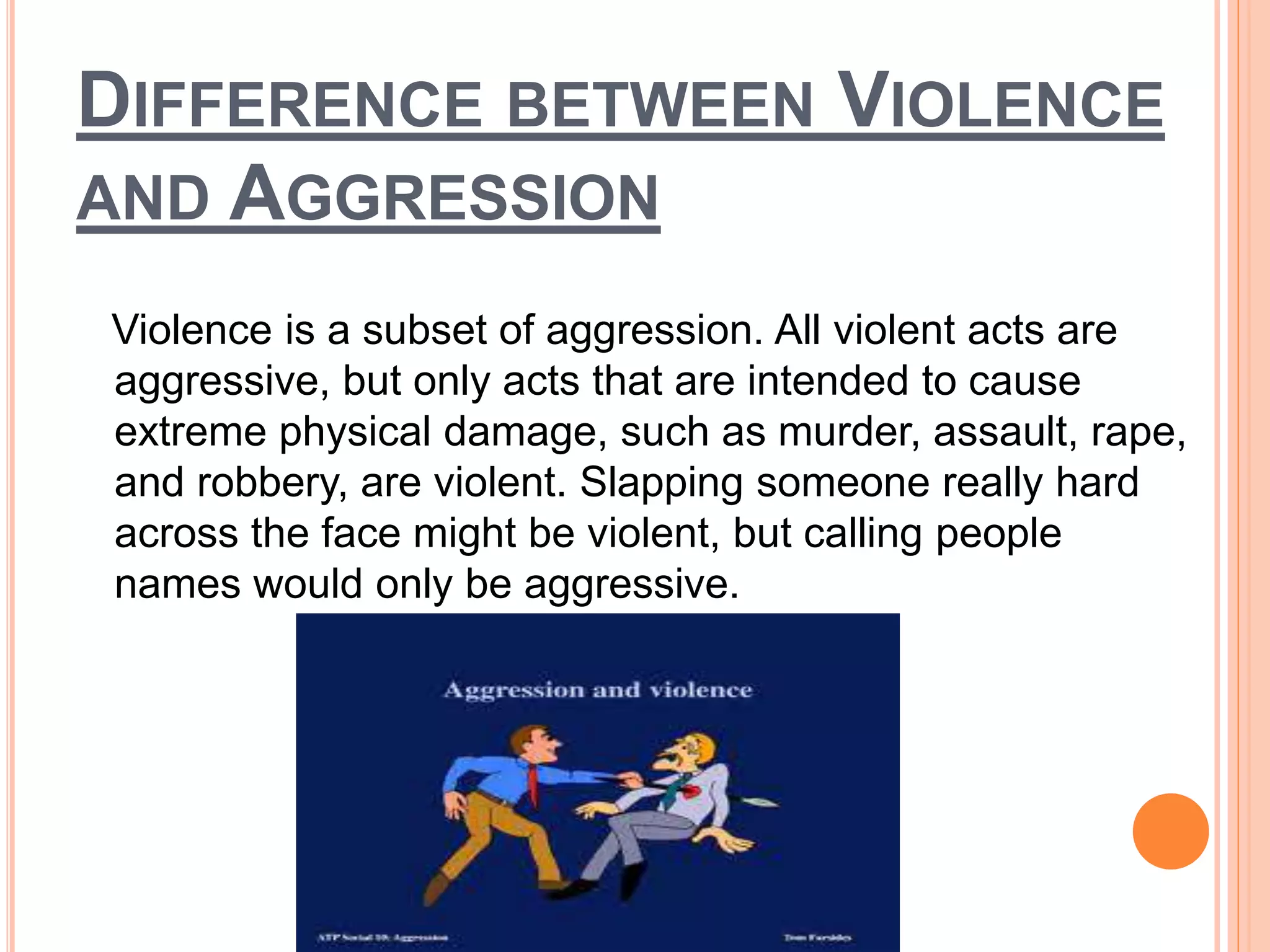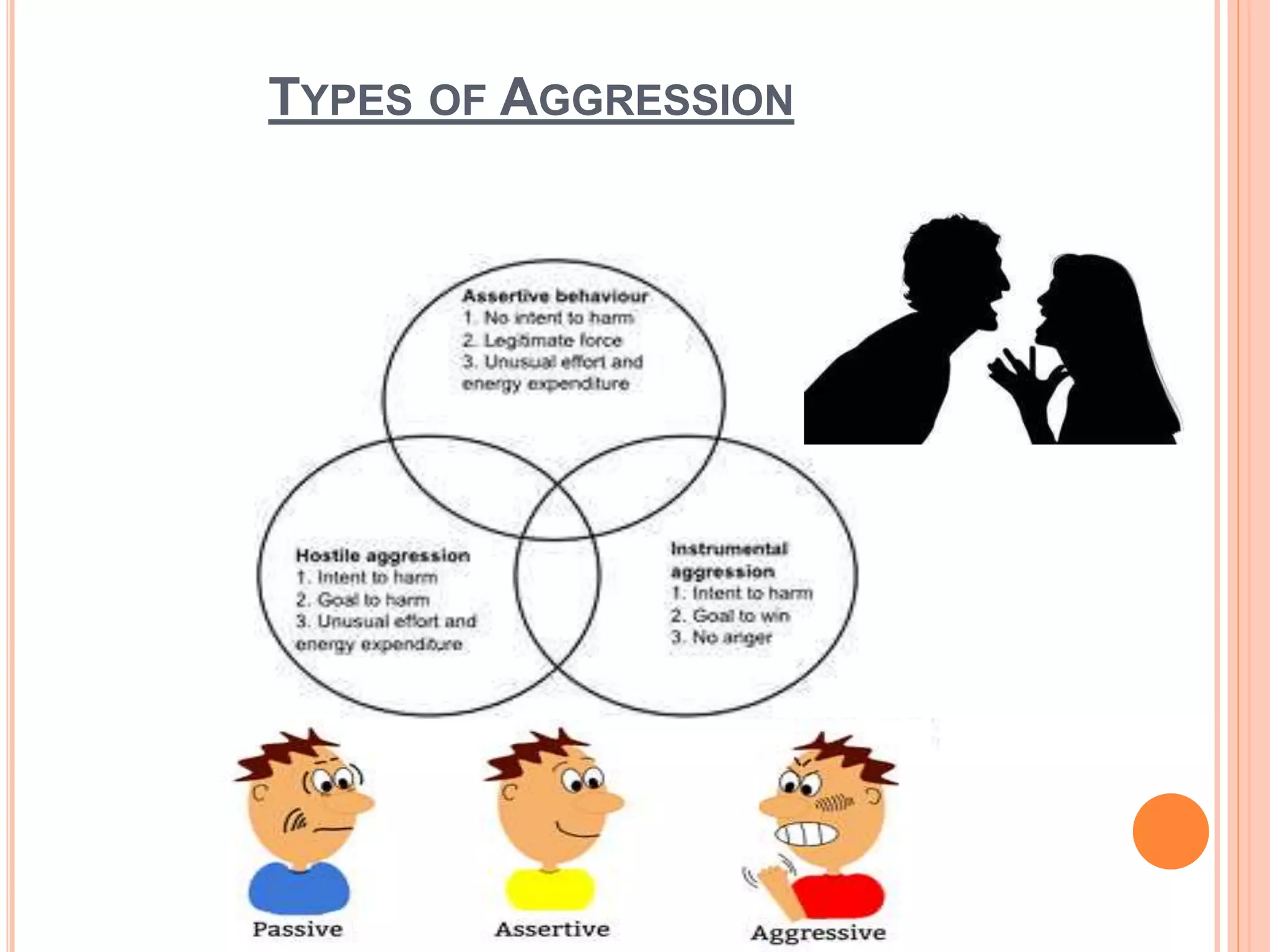This document defines and discusses aggression. It begins by defining aggression as behavior intended to harm others physically or psychologically. It then discusses the etymology and different definitions of aggression. It outlines different types of aggression such as emotional, instrumental, physical, nonphysical, direct, and indirect aggression. It discusses possible causes of aggression including mental health disorders, medical conditions, substance use, genetics, and environment. It provides examples of several mental health disorders and medical conditions that can cause aggression. Finally, it discusses ways to respond to and treat aggression in children and adults, including consequences, teaching new skills, reward systems, seeking professional help, and psychotherapy.
